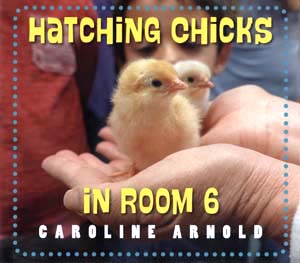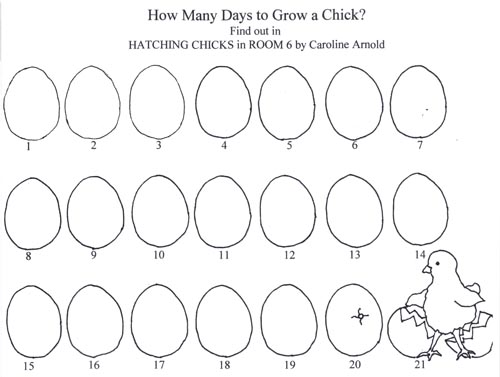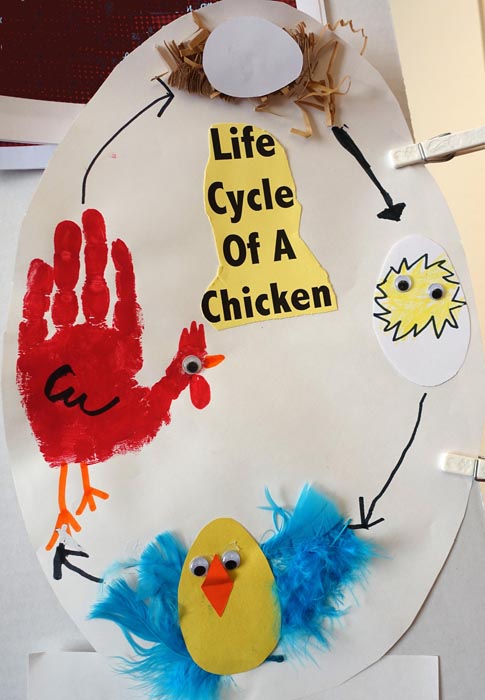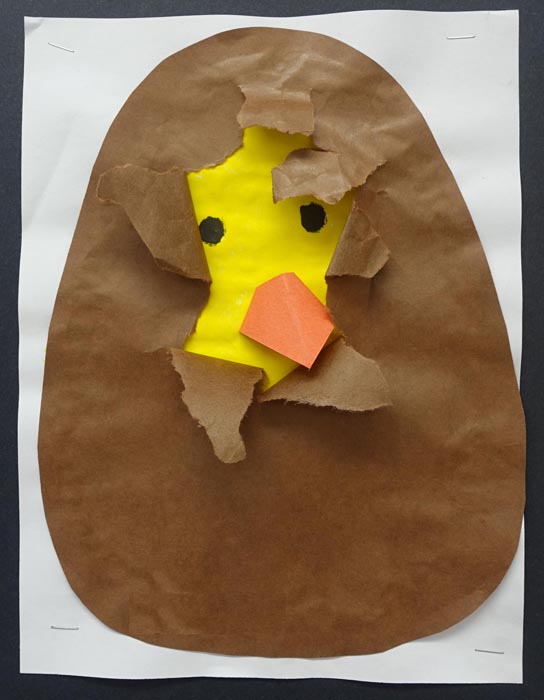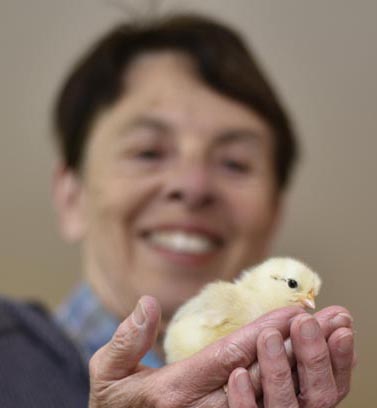This article first appeared on September 16, 2020, as a guest post at Patricia Newman's blog, LitLinks, Authors, Educators, Scientists sharing the natural connections between STEM and Language Arts.
Life Cycle Reinforces Reading:
In 21 days, chicks will hatch in Room 6! A hen laid the eggs, and
Mrs. Best brought them to school and put them in an incubator. Soon the
chicks will PECK, PUSH, and POP right out of their shells. The
kindergarteners are counting down to hatching day. When it happens,
they’ll be ready.
Among the many lessons learned in HATCHING CHICKS IN ROOM 6 is the
life cycle process–from incubating the eggs, seeing the shells break
open, to watching the chicks grow from fluffy balls to fully feathered
chickens. It is one thing to be told that chicks grow in eggs, but
another to actually see an egg hatch with your own eyes. This photo
essay follows an egg from the time it is laid in the henhouse, through
the incubating and hatching process in a school classroom, to the time
when the chicks are ready to go back to the flock. Children observe the
eggs and chicks up close as they learn firsthand about a chicken’s life
cycle.
Strategies for reading Hatching Chicks in Room 6:
Main text: The text of HATCHING CHICKS IN ROOM 6 is
written on two levels—the main narrative, printed in larger type, and
sidebars, printed in smaller type. Headings are red and in capital
letters for emphasis. What is the effect of telling the story in the
present tense? Does it make you feel as if you are participating in the
process?
Sidebars and captions: The sidebars and captions add
information, provide the opportunity to introduce more difficult
vocabulary, and expand on material in the main text. Note that the
sidebars are printed over a photo of an egg, reinforcing the theme of
the book.
Photos: “Reading” the photos is an important part of understanding the book. Photos:
- Add information to the story (such as showing what an incubator looks like),
- Show the children in their environment (in the classroom and outside in the chicken pen),
- Provide a sense of scale (we see the size of a newly hatched chick as it rests in a child’s hand), and
- Enlarge details for a closer look (the parts of a chick’s body).
- The
photos also reveal the children’s emotional response to the chicks. We
see and share their sense of wonder as they participate in each step of
the process.
Back matter: Back matter includes answers to
questions about eggs and chicks, vocabulary, links to online information
about hatching chicks, and a list of books for further reading.
Hands-on: How many days to hatch a chick?
The events of the story in HATCHING CHICKS IN ROOM 6 occur in chronological order. You can use these events to create a
time line, beginning with the day the eggs go into the incubator. Click
HERE for a downloadable coloring page.
Which came first, the chicken or the egg?
In one classroom of second graders, the children made a mixed media
presentation to show the life cycle of a chicken. They used packing
material to represent the chicken’s nest, real feathers to represent the
growing chick, a hand-print for the body of an adult chicken, markers
for drawing, and googly eyes for all. Mounted on a large poster board
cut into an egg shape, with black arrows drawn to indicate the circular
process, it is a dramatic and colorful presentation.
Ready to hatch!
When a chick is ready to hatch, it uses its beak to poke a hole in the shell.
For this project you will need: Construction paper, pencil, scissors, glue, black marker.
1. Cut out two large egg shapes from yellow and brown paper. Cut a
small hole in the middle of the brown paper. Glue the egg shapes
together around the edges.
2. Carefully tear back the hole in the brown paper, pulling the pieces to reveal the yellow paper underneath.
3. Use a marker to draw two black eyes. Cut a triangle of orange paper and fold in half to make a beak. Glue it on.
Now your chick looks like it is ready to hatch!
Caroline Arnold has been writing since 1980 and is the author of 170 books for children, including Butterflies in Room 6
(2019) and companion book Hatching Chicks in Room 6
(2017), a JLG Premier Selection and CRA Eureka Award winner. She
illustrated both books with her own color photos. Other recent titles include A Day and Night in the Rain Forest
in her Habitats series, illustrated with her own cut paper art. A noted
science writer, Caroline Arnold has had thirty-three books on the NSTA
Outstanding Science Trade Books list including Too Hot? Too Cold?
and A Warmer World
.
Her books are inspired by her travels, her love of animals, fossils,
and the out-of-doors. She lives in Los Angeles, California. www.carolinearnold.com










